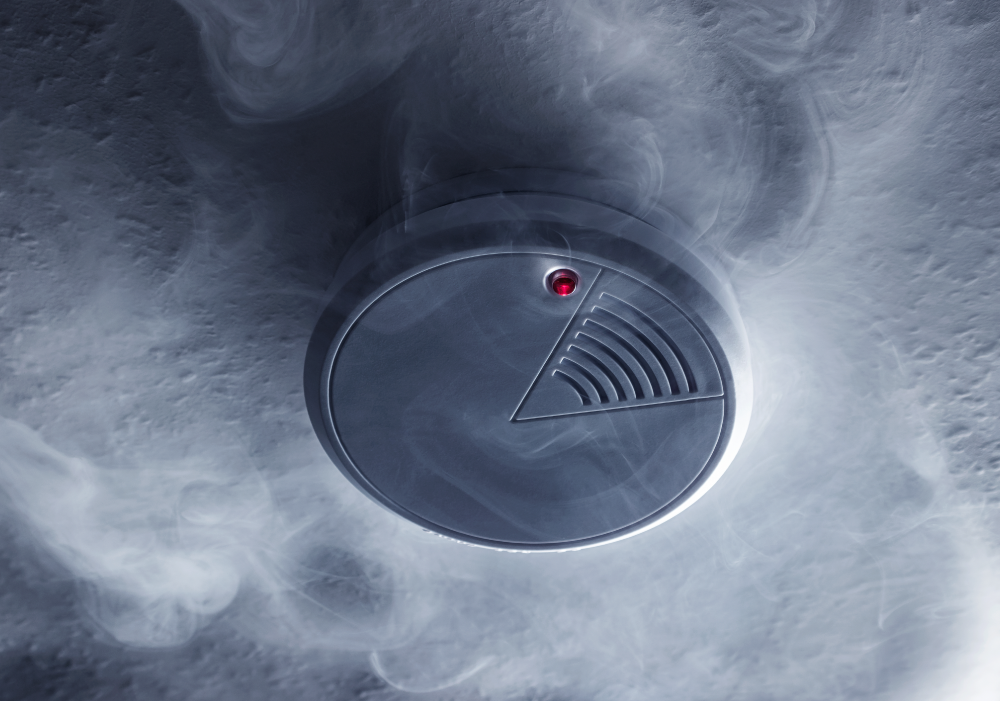It’s unfortunate but true: people get fed up with smoke alarms and disable them. More often than not — 73% of the time, in fact1 — we simply want to stop triggering our alarms with burnt food. However, when people forget to re-enable their alarms they’re putting themselves and their property at risk.
The folks at Underwriters Laboratories (UL), the group responsible for setting standards on consumer products, recognize this problem and have updated their standards to address it. To earn the UL mark, smoke alarms will soon have to distinguish between smoke from fire sources and smoke from cooking sources.2 The goal? To reduce nuisance alarms and, by extension, the number of people disabling their smoke alarms.
 People often turn off their smoke alarms if the alarms are too
People often turn off their smoke alarms if the alarms are too
sensitive to nuisances like burnt food.
Related:
Home, Sprinklered Home
These changes also apply to smoke detectors (yes, smoke alarms and smoke detectors are different). Smoke alarms are typically found in homes and smoke detectors in commercial buildings. While smoke alarms sense smoke and respond by beeping, blaring, or otherwise alerting you, smoke detectors sense smoke and connect to a central control unit rather than emitting sound themselves. Based on input from the detectors, the central control unit is the one that sounds the alarm.
New standards
The new UL standards were set to go into effect on June 31, 2021, but were pushed back to June 30, 2022, the date manufacturers must start making alarms and detectors that meet the updated standards. Another important date related to the updated standards is January 1, 2022, the day when the National Fire Protection Association (NFPA) standards started requiring smoke alarms or detectors to be listed for resistance to common nuisance sources from cooking.
Related:
Fire Safety Tips for Consumers
Updating standards to keep up with building and furniture trends
Cooking nuisance alarms have occurred since smoke alarms and detectors were first installed in homes and offices, occurrences that haven't changed much since the initial publication of the UL standards in 1976. However, something else has changed: the contents of our homes and offices.
First developed during World War II, polyurethane foam is now very common in furniture, flooring, and even appliances.3 If caught on fire, this type of oil-derived foam burns faster than wool, cotton, and other natural fibers used in furniture and generates lots of heat and smoke. The smoke from polyurethane foam is different than that emitted from other materials.
The new UL standards address this difference by requiring smoke alarms and detectors to pass two tests showing they can effectively sense smoke from polyurethane foam fires.
The future of smoke alarm standards
Smoke alarms and detectors meeting the new standards will become more widely available after the June 2022 deadline and will bear a UL Certified label with the text “Helps Reduce Cooking Nuisance Alarms.”4
Smoke alarms and detectors meeting the new standards are on the market now and will become more widely available after the June 2022 deadline. Smoke alarms and detectors tested by UL will bear a UL Certified label with the text "Helps Reduce Cooking Nuisance Alarms."4 Smoke alarms and detectors tested by other testing laboratories will also have updated labeling.
And while the new standards will help make us safer in the future, now is a good time to double-check the smoke alarms in your home.
Take some time and follow these three steps today:
- Test all smoke alarms and repair them if necessary.
- Check the age of all smoke alarms: each unit — not just the battery — should be replaced every 10 years.
- Check the smoke alarm manufacturer’s maintenance guidelines and be sure you’re following them.
[1] "Enhanced Smoke Alarms and New UL Testing Standard," presentation at the 2019 NFPA Conference, https://www.abstractsonline.com/pp8/#!/7855/session/46
[2] UL, https://www.ul.com/news/ul-releases-new-requirements-smoke-alarm-standards-opens-new-test-lab
[3] American Chemistry Council, https://polyurethane.americanchemistry.com/History/
[4] UL, https://www.ul.com/news/ul-releases-new-requirements-smoke-alarm-standards-opens-new-test-lab











